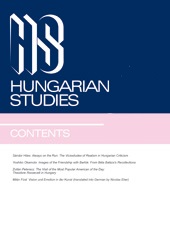National identity in Hungarian architecture and the shaping of Budapest
National identity in Hungarian architecture and the shaping of Budapest
Author(s): András FerkaiSubject(s): Cultural history, Architecture, Social history, Rural and urban sociology, 19th Century, Identity of Collectives
Published by: Akadémiai Kiadó
Keywords: Budapest; architecture; national style; Imre Henszlmann; Frigyes Feszl; Ödön Lechner; Károly Kós; Béla Lajta;
Summary/Abstract: Great cities are usually considered to be cites of modernity, so it may seem a bit bizarre to connect them with national identity. Indeed, the face of the Hungarian capital is rather international, reflecting well the universal tendencies of modernization and urbanization that occurred from the end of 18th century. There are, however, some key-buildings and a few other examples in Budapest that give evidence of a counter intention: to provide architecture with a distinctive character as an expression of Hungarian nationality in a modern sense. The 19th century was a high period of Nationalism, and the issue of national style in the arts was raised in many places in Europe and even in the Americas. How could it have been avoided in a multi-ethnic Hungary that tried in vain to regain its independence from the Habsburg Empire throughout the century? It is no wonder that the national character of the arts was the subject of a more or less permanent discussion from the 1850s to the outbreak of World War I. The following paper offers an overview of the urban development of Budapest, followed by presentation of the concepts of the national style with reference to the example of buildings erected in the capital city and a brief discussion of their antecedents.
- Issue Year: 24/2010
- Issue No: 2
- Page Range: 181-187
- Page Count: 7
- Language: English
- Content File-PDF

